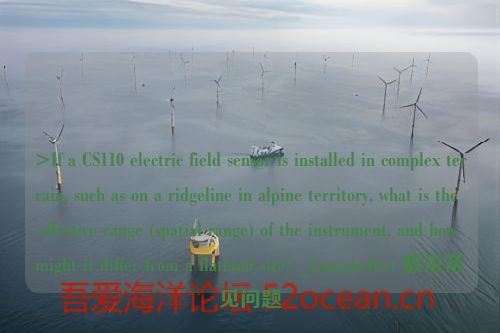The following information can help determine the effective range (spatial range) of the CS110:
- Thousands of miles: When there are no clouds in the sky, the CS110 responds to what is called the fair weather electric field created by the “global electric circuit.” Thunderstorms worldwide transfer charge to the upper atmosphere, which comes down worldwide as an electric field that varies from roughly -100 to -200 v/m on flatland sites. Our customers have indicated that the fair weather electric field is enhanced by high terrain. Interestingly, there are daily and seasonal changes to this global electric circuit.
- 20 miles: Lightning strikes in thunderstorms as far as 20 miles away are discernable in the fair weather electric field from a flatland site. The strikes show up as sharp changes in the electric field followed by a more gradual recovery. It is unknown if the distance is greater on a high ridgeline.
- 5 to 7 miles: When charged clouds are within five to seven miles, they can positively or negatively change the electric field above or below the fair weather electric field. Even when the actively producing cloud-to-ground lightning portion of the storm is 20 miles away, an anvil cloud from that storm that comes within five to seven miles of the CS110 will change the electric field measured by the CS110. Think of clouds attached to an active thunderstorm as electrical conductors. Even anvil clouds that were once part of a thunderstorm that has since dissipated will hold their charge for a significant period.
- A mountain between a charged cloud and the CS110 will block the electric field influence that the cloud would have had on the CS110.
For more information on this topic, refer to the “Cumulonimbus” section (section 3.2) of the book Lightning: Physics and Effects by Vladimir A. Rakov and Martin A. Uman.

